- Dates2 May 2008 - 28 June 2008
- Artists
by Bob Nickas
BN: In the '50s Art News used to have a feature where they would go to an artist's studio and over the course of a day, or a number of days, they would photograph a painting being made - from a blank canvas to a finished work. They would publish a series of photographs with a short text, if I remember correctly. Willem de Kooning Paints a Painting. Or Helen Frankelthaler Paints a Painting. The paintings you've been making for the last couple of years are so densely layered that it would be incredibly revealing to be able to look at a series of photographs showing a work of yours being transformed from blank canvas to finished painting.
JG: For a while now, I have been taking pictures of my studio when works are in process, kind of snapshots of where I am at the time, the condition — messiness, organization, possessions — of the studio, and also a record for myself of how a painting progressed. I remember those Art News features, and also in school I remember teachers showing these progressions. I always enjoyed that, and now, when process and progression play such a large part in what I am making I am more fascinated by the performance and duration of a painting. How it gets from a red dot to a whole system of dots. Of course one cannot know from looking at these pictures what is in the artist's mind, but since it's such a visual thing one can only project. The way that I work is that I live with my art and my studio is where I do a lot of things, like eat dinner and watch television, so the paintings are always there, and the ones I am working on are constantly on my mind, so I can see where I want to go the next day and then sometimes I take a picture so I dont lose where I came from. I am interested in the history and chronology of each painting, especially now when those things become part of the painting, like a recording.
BN: I like that expression: the performance and duration of a painting. When I first wrote about your work back in the late '90s, I spoke about how the paintings perform — as if music or a play was inside each one, and they began to perform when the viewer came into the room. If I think of the paintings you were making at the time, those performances would be alternately whimsical and minimal, very open, with pared down elements linked together in a kind of dance, or suggesting a structure. Now, with process and progression central to your painting practice, if I had to describe the "performance," I would have to say that it's cacophonous, it borders on delirium; in fact, with all of the numerical notations, one of these newer paintings could be seen as the score for an unperformable symphony, a piece of music spun completely out of control. And yet they aren't made that way. You aren't working quickly. Your paintings don't come fast. They are the result of a deliberate, considered approach — the same approach you had in the late '90s. But something changed ...
JG: I changed. In the '90s I was trying to distance myself from a lot of painterly traditions and stereotypes. In those paintings I was using some of the devises of abstraction and minimalism and creating something that felt open-ended . I felt that a lot of painting was claustrophobic in that there was no air or space, and that the artists were painting light and space into their work. I wanted to perform or paint with an attitude of keeping possibilities alive within the painting, not close it off by painting out the whole surface. So what happened was that they were about using an iconography and language that was geometrically derived, but that was handmade and did not camouflage a thinking process.
BN: As Dan Walsh was doing similarly around the same time.
JG: Right. I was into the idea of holding back, or restraint, then waiting for the right moment to act on the canvas. So now, with more complexity and transparency, its the same thing, but I want to make these paintings have a density without the whole buildup of paint. I do work slowly, but act fast when I know what I want to do. I still wait until the right moment to pounce, but I am less afraid of not knowing where a painting is going. In fact the whole adventure is about trying to figure it out as I go on, but then knowing when to stop before resolution sets in.
BN: I love that you think of it as an adventure. And the intent to make visible the thinking process raises the notion that doubt and even confusion may appear in the work. Put them together — the sense of adventure and doubt — and yours is a painting practice that embraces the idea of the unknown.
JG: When I start a painting I have no idea of what I am going to do or where I want to go. I like working in the territory of the unknown which fascinates me, and exposes as false the prevalent idea that everything has been done in painting.
BN: This idea of having no idea of where you want to go — funny to me because, as I mentioned to you before, some of these very recent paintings appear map-like to me. They're dense, overloaded maps, and they go in many directions all at once. You used the term "brain mapping" when I brought this up. How exactly does this relate to painting?
JG: Maybe it relates more to sculpture. If I look at a monochrome painting by say, Lucio Fontana, I see physical action, the slashing into the color as very beautiful. I can see a sculptural force at work. That he made ceramics as well is pertinent to me because since 2003 I have been making ceramic sculptures which in turn have transformed my paintings. I am drawn to artists that have a sense of the physical, like Jean-Michel Basquait. I am thinking specifically of a painting of a head, almost a death head, that seemed to be a three-dimensional diagram of his brain.
BN: I've always been drawn to the act of building, the fantastical architecture and especially the structure, at times precarious structure, in your paintings, and of course architecture is sculpture. Your ceramics, which I see as eccentric objects, eccentric in the sense of personality, have for me more of a relation to your earlier work than to what you've been doing more recently. In what ways have the ceramics transformed your paintings?
JG: Whenever I would give talks on my work, I would speak about the fictional architecture or sculptures that were cropping up in the paintings. I spoke about it as something made up that I was interested in depicting. Then, one day I bought some material and started making these small sculptures in secret. I hid them when anyone came to the studio. So something that I said I would never do I was doing. After a while I even enrolled in a clay course and very seriously started making clay sculpture. In a way I didn't even think of it as sculpture but as drawing. I was drawing with the clay, and the forms were so basic, even simplistic, childish. I think doing these unleashed something in the paintings that was less angular and static, I started using some of the curvy forms that I was making in the clay pieces in the paintings. I was even putting bases in the paintings the same way I made bases for the little sculptures. There is one painting, which is an abstract mess of stuff which is held up by a base, kind of like a real pedestal to hold up the fictional sculpture. I enjoy the humor that the clay brings out and this has crept into the paintings.
BN: I like that you kept these ceramic pieces secret, as if they were embarrassing, or forbidden. It gives them a perverse provenance. They come from the studio, but from the secret side of the studio. I know that you make a lot of drawings, works on paper, and the usual line of thinking is that painters can have a direct relation from drawing to painting. But you are really involved with the practice of painting, in the idea of spatial relationships in terms of a flat, vertical plane - the space of a canvas — as real estate: What can we build here. So weird today in a New York city that has gone so crazy mad with money and tearing down and re-building. One day a building is there, and the next day it's gone, so a generic high-rise can take its place, a building that looks like it should be in Miami, a high rise in South Beach. I've lived here for twenty-plus years, and believe me, New York isn't New York anymore. Just listen to the noise outside your windows.
JG: I am under siege here. There is not a day that goes by where I don't fantasize about getting out of New York. I have been living with construction projects for years now and it's not going to end any time soon. They are currently tearing up the street I live on to replace the old sewer system to make way for a new one to accommodate yet another new glass building. Sometimes when I'm outside walking my dog, I look around and don't recognize the people, the buildings. It's faceless. We could be anywhere in the world. I remember that show you included me in a few years ago, "Curious Crystals of Unusual Purity", where the subtext of the show was the idea of a collection of objects or thoughts.
BN: A cabinet of curiosities.
JG: I think that with all of this invasion from the outside, the erasure of the character of New York, I do retreat into my own world to create other worlds. That's when I like to draw, to shut it all out. The drawing isn't really a way into the painting, it's an escape.
BN: Do you draw every day? Do you paint every day?
JG: I do draw everyday. Since around 1992 I have kept notebooks and I go through about one a month or so. I like to draw when I watch movies or when I'm on the subway, usually with a ball point pen. When I was in my twenties, I used to sit for days and draw. It got to the point where I was hiding out with my work, which wasn't such a good thing. The only good thing about it was that I developed a habit of always needing to draw to stay connected to myself. Painting is another kind of energy and it's impossible to paint every day, although I try.
BN: How does drawing inform the painting? And I know that you work on more than one painting at a time — although I don't know if this has always been the case — but how does the movement from one painting in progress to another, and then back-and-forth, figure into the process?
JG: Well, right now I am working on large paintings, kind of one at a time, but as one nears completion I start another one so that for a little while I am working on two, in different stages of doneness. What I also do at the same time is work on lots — sometimes twenty going at once — of small paintings. The small paintings are where I try things out, use up extra paint, make more of a mess than I would normally. At some point one or more of these becomes a finished painting, and they go into another pile in the studio. Often, some of these small paintings never get finished. They may relate more to my drawing process, where there is really no goal other than to keep moving. I think that the drawings inform the painting process not by content but by the use of the hand. Drawing takes care of the excess energy so that when I approach the painting I can be more in my head. Drawing is a bit mindless for me It's automatic, while painting is a lot more intellectual.
BN: When I look at your more recent work, I'm struck by how dense they are with information. With some of them, it's seems like four or five transparencies of paintings have been placed one on top of another on a lightbox, and you're seeing them all at once. These very layered paintings can be seen as, say, five paintings in one. Having started out in a very direct way with a clearly isolated image/object or image/structure, and now with the first survey of your work — having a chance to see these paintings up against the "dirtier," more complex paintings you're making now — can you talk about this layering and your progression over the years.
JG: It was a gradual process. I was making some silkscreens around 2002, and the layering of screens on top of screens changed what I then did in the studio. I got interested in the transparency of colors on top of colors, mimicking the silkscreen process. I was also at this time making some collages and using a primitive computer drawing program with the result being conglomerations of works into one work, which subsequently found its way into the construction of a painting. So at some point I was just putting more information in the paintings, going against some of the strictures that I had set for myself earlier on. I found that the layering of information and the numbering laid the process of a painting bare, kind of showing a painting's skeleton instead of the edited, streamlined earlier versions. When I started putting numbers in my paintings, I was engaging the viewer into my thinking process.
BN: One last question. How long does it take to make a painting?
JG: I would say around four to five weeks on average. If one is not going well, or it turns out to be a mistake, I put it away rather than destroy it. Usually when I take it out months, or sometimes a year, later, I realize that I can use what's there and just continue. Very often the mistakes become my best works.
New York, 2007
-
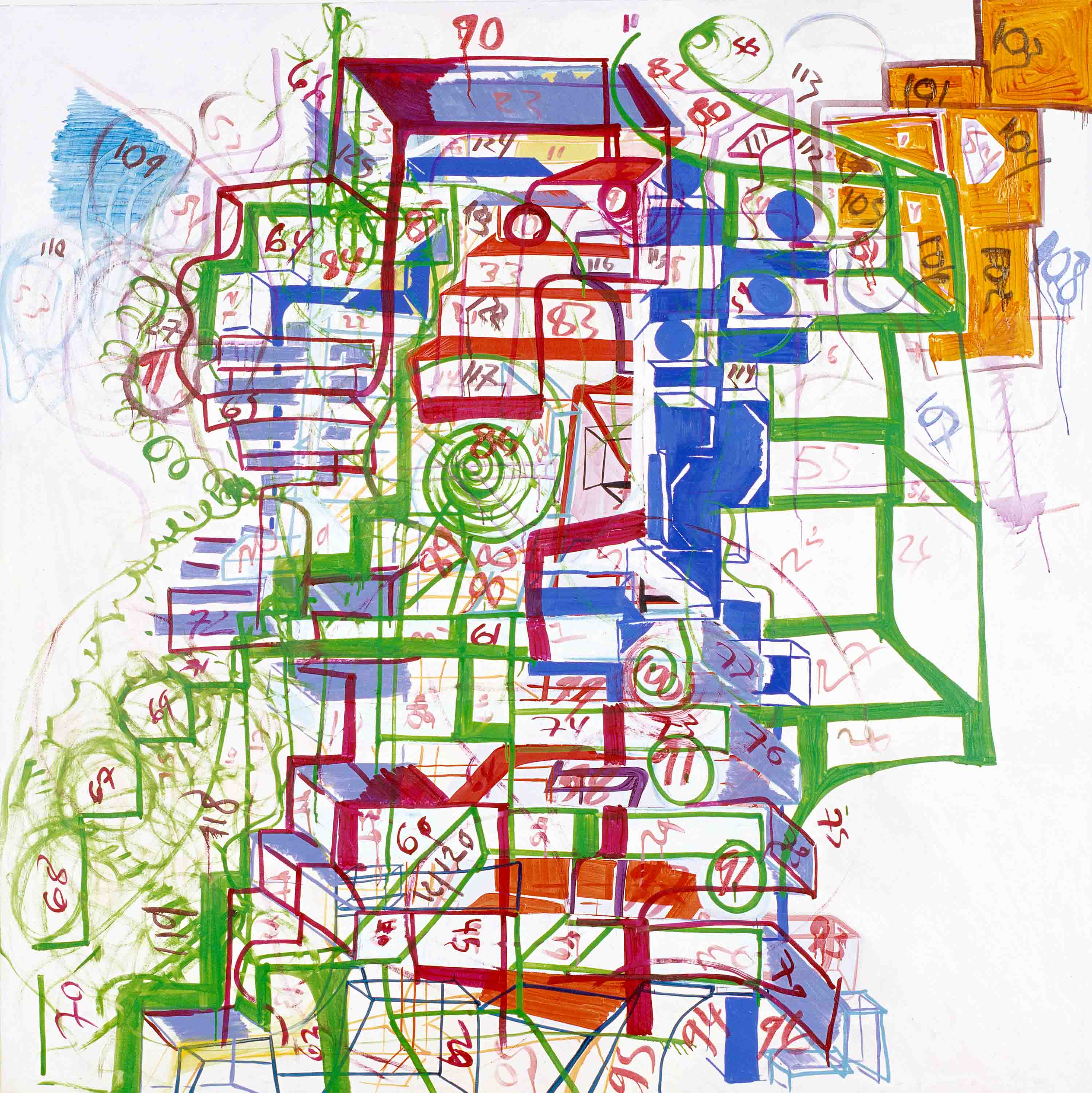 Joanne GreenbaumUntitled2007-2008
Joanne GreenbaumUntitled2007-2008Oil on canvas
60 x 60 inches / 152,4 x 152,4 cm -
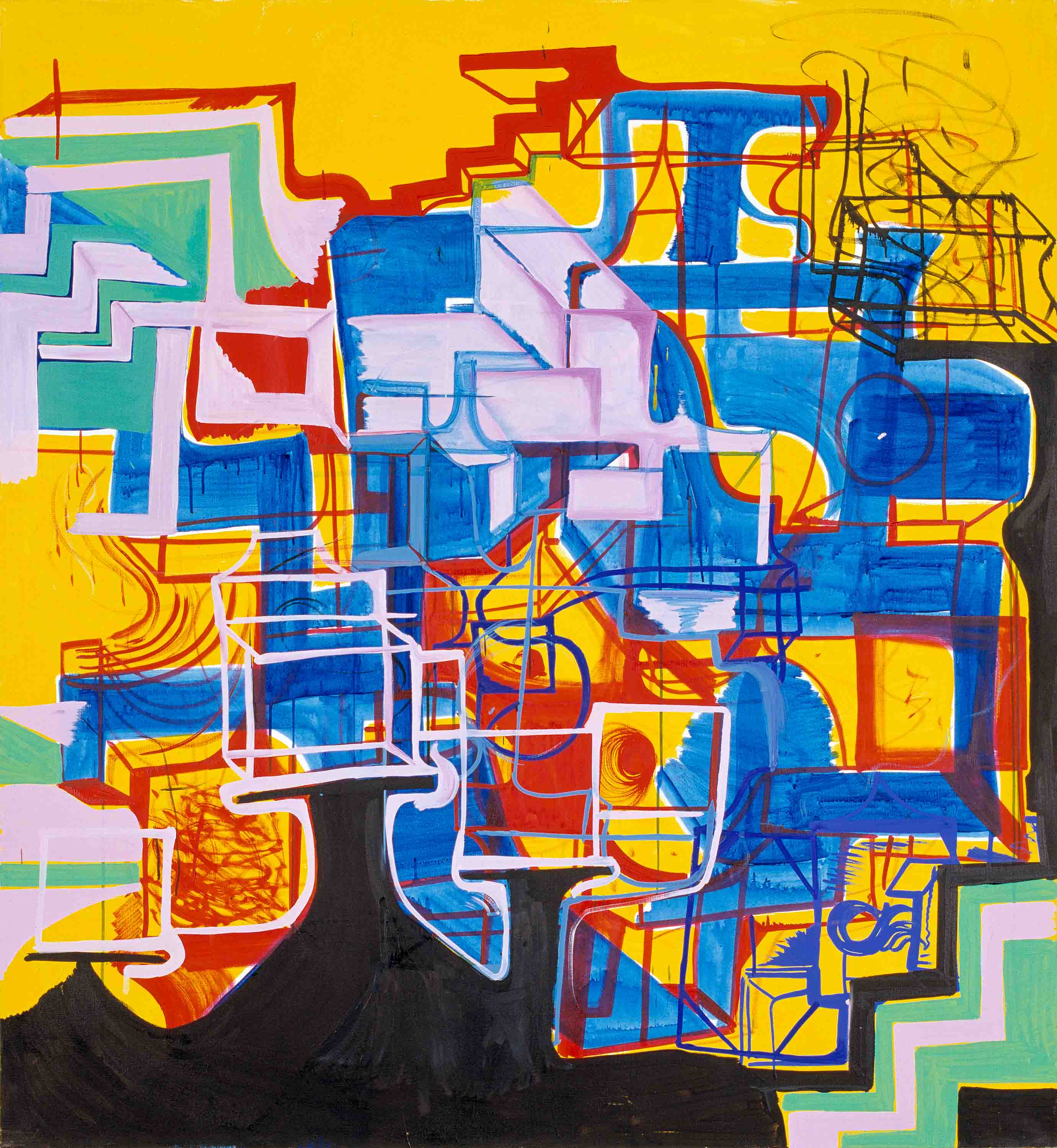 Joanne GreenbaumYet2006
Joanne GreenbaumYet2006Oil on linen
60 x 55 inches / 152,4 x 139,7 cm -
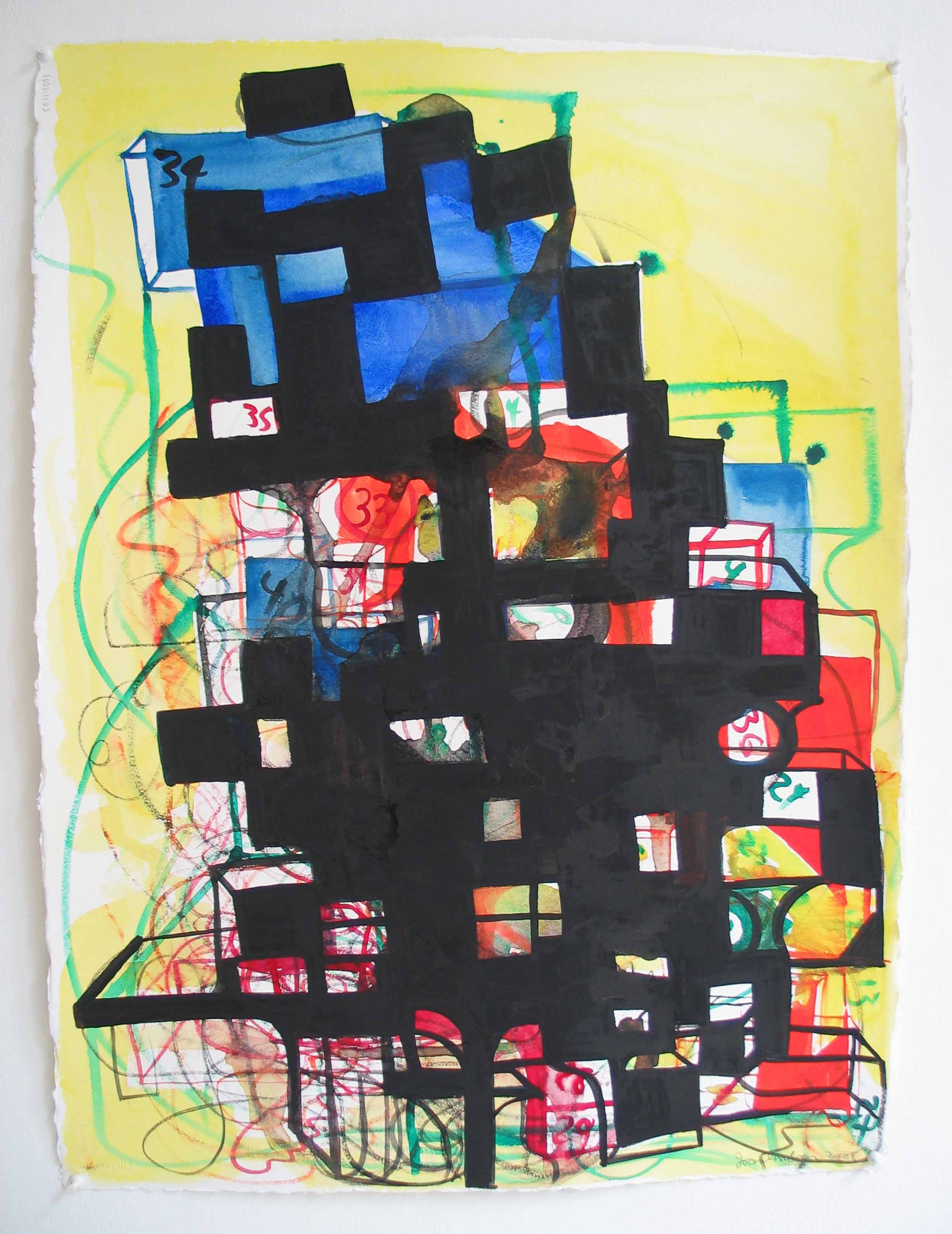 Joanne GreenbaumUntitled2008
Joanne GreenbaumUntitled2008Watercolor and gouache
30 x 22 inches / 76,2 x 55,9 cm -
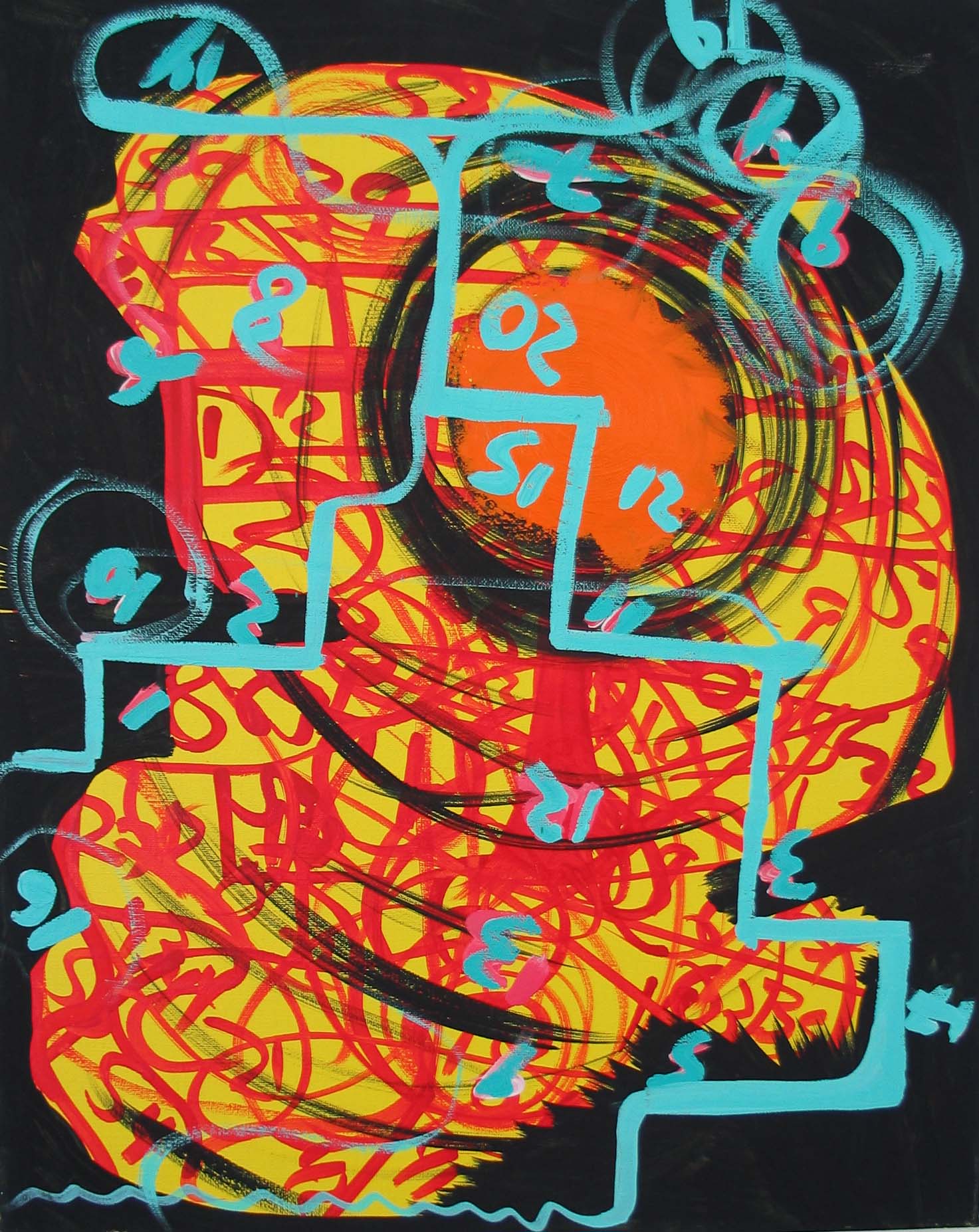 Joanne GreenbaumUntitled2007
Joanne GreenbaumUntitled2007Oil on canvas
20 x 16 inches / 50,8 x 40,6 cm -
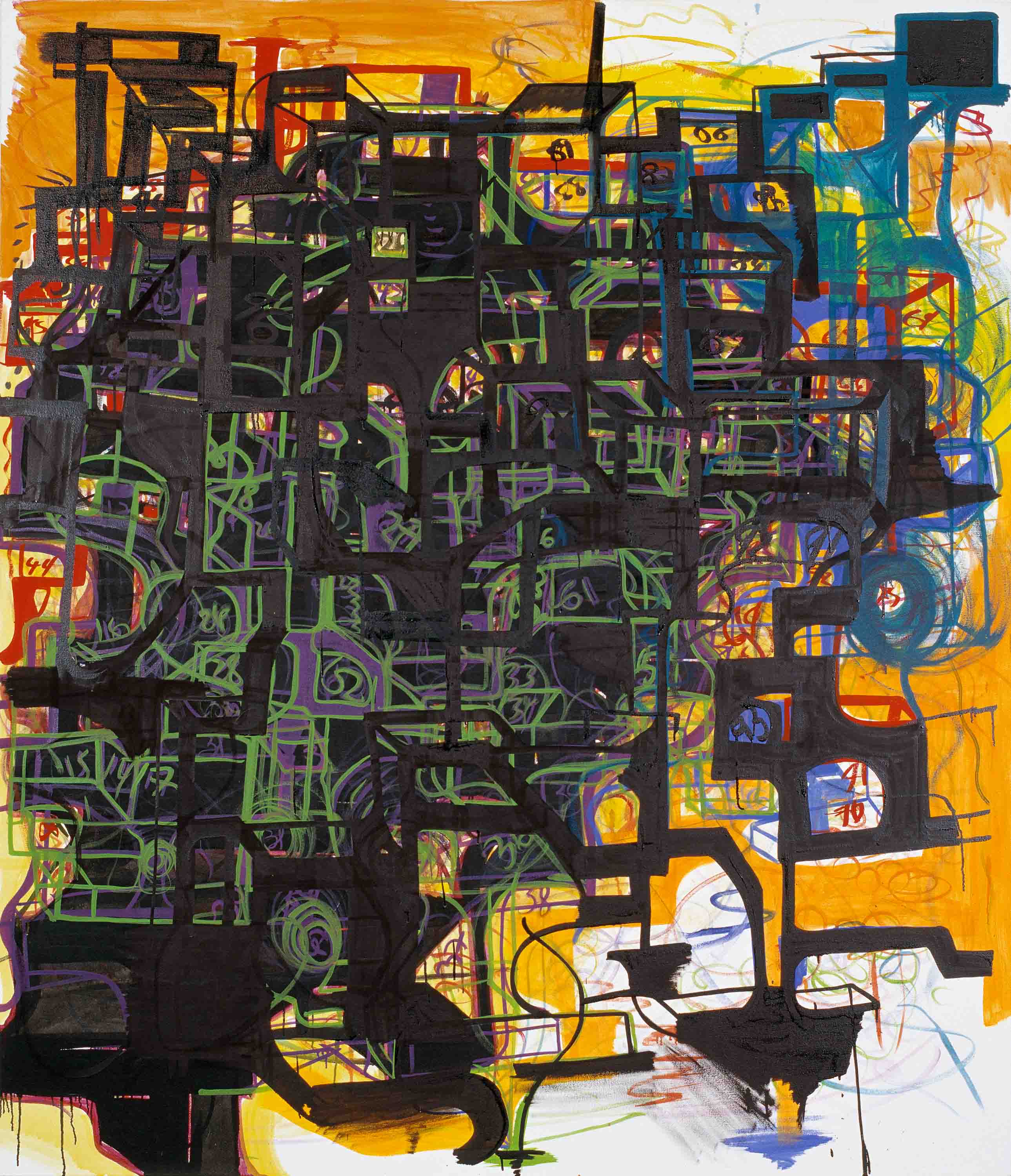 Joanne GreenbaumUntitled2007-2008
Joanne GreenbaumUntitled2007-2008Oil, flashe and acrilic on canvas
70 x 60 inches / 177,8 x 152,4 cm -
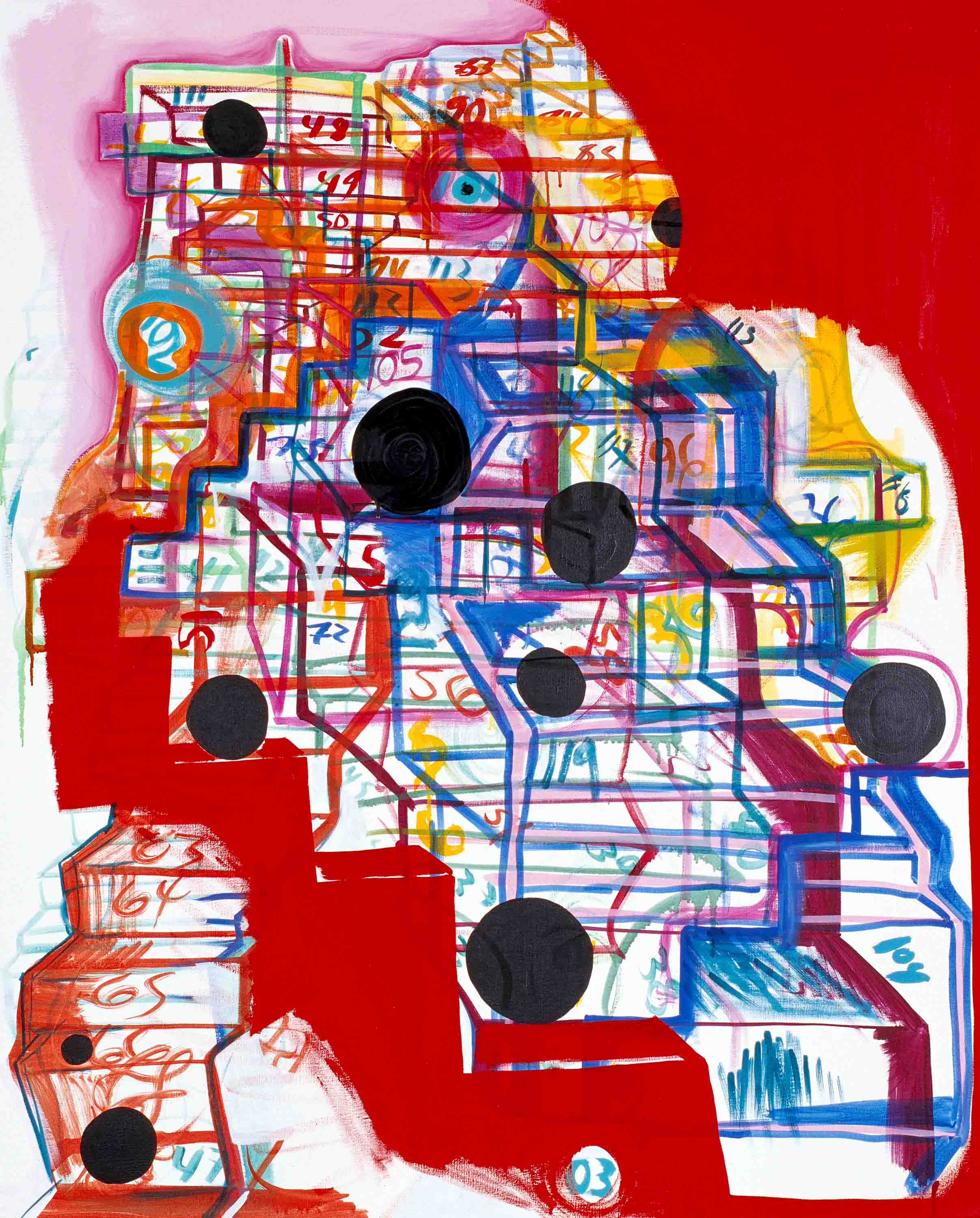 Joanne GreenbaumUntitled (steps)2005
Joanne GreenbaumUntitled (steps)2005Oil on linen
50 x 40 inches / 127 x 101,6 cm
